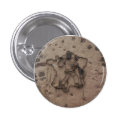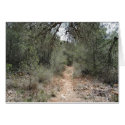 A Place Called Winter by Patrick Gale
A Place Called Winter by Patrick GaleMy rating: 4 of 5 stars
I received a copy of A Place Called Winter from its publishers, Tinder Press, via NetGalley in exchange for my honest review. This is my ninth review for Sophie and Suze's NetGalley Challenge.
A Place Called Winter is set in the early 20th century and follows several years in the life of affluent yet idle society man Harry Cane. It begins with a harrowing description of a 'treatment' which Harry is forced to undergo at a Canadian mental health facility. At this point, we have no idea what is wrong with Harry and only learn the cause of his incarceration later. Instead, the novel jumps back in time, beginning his story chronologically from his life as a young man in England.
I had trouble deciding whether I actually like A Place Called Winter a lot or just a bit! I thoroughly enjoyed discovering Harry's life story and Gale's evocative prose gives a wonderful picture of both stifled English society and the wild expanse of the Canadian homesteads. Harry's lack of direction was often irritating and his homosexuality is the driving theme of the novel. I was saddened, although not surprised, by the attitudes of his in-laws over a hundred years ago. Winnie's family are especially well-drawn and I found it easy to understand Harry's sacrifices for his brother, Jack. I am sure people like Harry would have hoped such bigotry would become a thing of the past. Depressingly, having read a stream of Facebook comments about the 'dancing skeletons' film this Valentine's Day, I know that there are still many vicious bigots around.
Once engrossed in the main story arc, I didn't like the time jumps back to the institutions which I thought disrupted the story flow. I wasn't convinced by Troels' repeated appearances, but I did like the Jorgensen family who reminded me very much of the brothers in Kent Haruf's Plainsong. A Place Called Winter taught me lots I didn't know about early white settlement of Canada which is interesting, but I didn't think the book quite lived up to its potential.
Buy the hardback from Waterstones.
 The Cortés Enigma by John Paul Davis
The Cortés Enigma by John Paul DavisMy rating: 3 of 5 stars
Having enjoyed The P45 Diaries last year, I've kept following @BenHatch on twitter. Recently I spotted a retweet announcing free copies of The Cortes Enigma on Amazon for one day only. I clicked through!
Set almost entirely on the Scilly Isles, The Cortes Enigma is an entertainingly improbable adventure in the Indiana Jones vein. Indeed a couple of joking references are made to the films which reminded me of our location visit in Almeria. John Paul Davis has obviously spent time thinking out his plot and I mostly kept up with all the rapid comings and goings. It is pure escapism that a single American, new to the quest, could out-think decades of treasure hunters and researchers and jump to so many correct conclusions so quickly, yet I found myself rooting for Ben pretty much from the start.
Davis's writing does tend to get bogged down in repetition which slows the otherwise frantic pace and I did sometimes have trouble immediately identifying who was who at the start of new scenes. The characters are lightly sketched and, other than our heroes, pretty stereotypical, but this is much more a novel of doing than of being. The only young female character, Valeria, is perpetually described in terms of her appearance and apparently only exists for the male characters to lech over. Oh, except for occasional personality insights such as when she admires a kitchen!!
Rampant sexism aside, I liked reading The Cortes Enigma. The Scilly Isles are definitely the star of the show. I was quite taken by descriptions of the landscapes and villages so won't rule out a visit there some day!
 The Enigma Engine by Wendy L. Callahan
The Enigma Engine by Wendy L. CallahanMy rating: 4 of 5 stars
I bought this book as part of the Indie Steampunk Book Extravaganza 2.
Oh, I'm just a little bereft at finishing the last of my quartet of Aetheric Artifacts stories. In this fourth installment (the third full-length), Demetra is charged with discovering the identity and possibly nefarious intentions of a mystery someone who is kidnapping Aetherals from all over London.
Nicely plotted as always and with Callahan's trademark sharp repartee very much in evidence, The Enigma Engine is a fun adventure. I love picturing Demetra's fabulous outfits! Recapping of events in previous stories did slow the pace a little, but I was pleased to see Aunt Verti stride out again and the icy Lady Winterton is always great. The additions of a suitably villainous villain and wily accomplice made for a satisfying tale.
I have heard rumours of further Demetra and Francis stories on their way in 2015. Fingers crossed!
View all my reviews on Goodreads










































